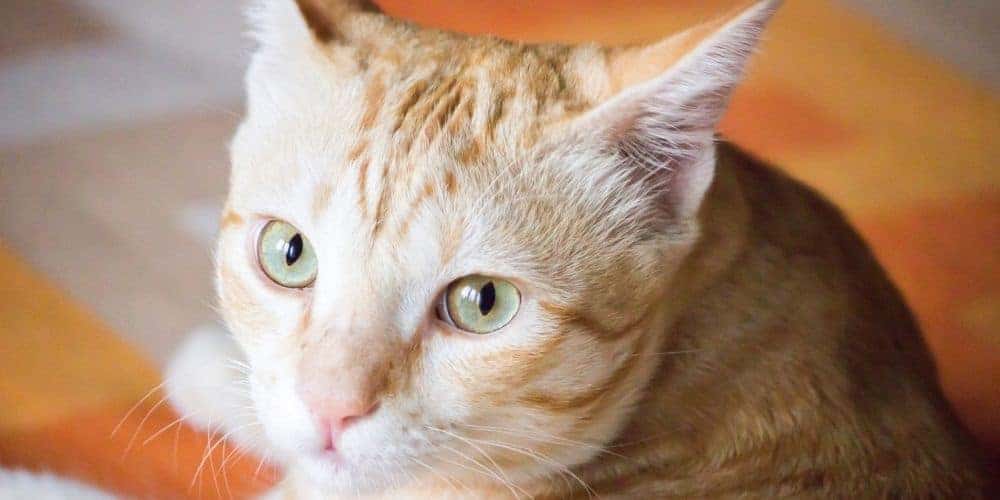Why Does My Cat Have Brown Spots On His Gums?

Just like with humans, spots that appear on cats’ gums can indicate a lot of health issues. Careful examination of the cat’s gums is critical because you can detect health issues and dental issues before they become too serious.
In some cases, cat owners notice some dark spots in a cat’s mouth while feeding or playing with it. So, why does my cat have brown spots on his gum? Let’s find out.
Cat Attitudes is reader-supported. When you buy through links on our site, we may earn an affiliate commission.
Why Does My Cat Have Brown Spots On His Gums?
Brown spots can appear in a cat’s mouth, but the condition is harmless. This disorder is known as Lentigo and is characterized by the appearance of flat brown or black spots on the hairless areas of the cat’s body, including the gums, nose, lips, and eyelids. Lentigo is quite common in orange, calico, yellow, flame-point, and tortoiseshell cats.
The main cause of Lentigo is the increase in the number of melanocytes or pigment-producing cells in the body of the feline. The spots usually appear first on the gums and on the lips, then spread to the eyelids and nose.
When the spots start appearing, they might not be that obvious, but they usually become more prominent and increase in number as the cat gets older. The spots can start appearing in cats that are as young as one year old but are more common and prominent in senior cats.
Single or multiple dark spots appear on the skin, while the rest of the area will be normal. The spots are known as lentigines and can be flat or slightly raised with well-defined borders. Each lesion will range from the size of 1 to 10 mm.
Superficial lesions or lentigo simplex are a few spots that appear on the skin but transform to Lentigo profuse or numerous lesions. With time, the spots create pigmented skin patches, although they will show no signs of redness or irritation.
The same thing happens in humans when they spend long periods in the sun and start to show freckles, but the cause is unknown in cats. As soon as you notice any changes in your feline’s skin, you should contact the vet to have the skin thoroughly examined.
Lentigo is a benign skin condition, but only the vet can differentiate between Lentigo and melanoma. Melanoma is skin cancer and shouldn’t be ignored. This is why the vet will take a biopsy using a fine needle and examine it at the laboratory.
Melanoma or skin cancer develops from melanocytes as well, but it is dangerous. Melanoma can also appear in the gums but count only for less than 1% of oral cancers. However, 50% of melanoma is malignant.
A vet’s thorough examination is needed to tell the difference between harmless dark spots and melanoma. Melanoma is common in older cats and the spots can be flat or slightly raised, just like Lentigo. However, the borders aren’t that defined, and the surface is usually darker. Moreover, skin lesions usually appear as solitary tumors and not clusters.
Lentigo is a cosmetic condition that only affects the way the cat looks. Melanoma is a lethal condition because cancer spreads to other parts of the body and can end your cat’s life.
Can Dental Problems Cause Brown Spots On My Cat’s Gums?
Brown spots can also appear on the gums because of dental problems. Even at a young age, without brushing your kitten’s teeth regularly, plaque and tartar accumulate due to food residue. The plaque and tartar can lead to brown gums that later lead to periodontal disease or gingivitis.
By the time the cat is one or two years old, the food particles will get stuck between the teeth and inside the gum line. These food particles react with the saliva to cause inflammation and discoloration of the gums. A hard substance called calculus builds up around the teeth, changing the plaque to tartar, and the degree of browning depends on how bad the tartar is.
If the brown spots appear on your cat’s gums because of dental issues, you might notice that your cat is having trouble chewing on food or might even stop eating altogether. Infected gums can also cause a noticeable bad breath that you can easily notice if you’re spending a lot of time next to your cat.
Seeing a limited number of brown spots on the gums indicates the presence of early-stage gum disease or gingivitis. At this stage, the gums appear swollen and might bleed when the cat is eating or when you try to brush their teeth. As the condition gets worse, you’ll be able to notice deep pockets between the teeth, and the gum tissue will start to recede, exposing the roots of the teeth.
In the late stages of gum disease, the gums will be completely brown, and the teeth will turn brown too. The teeth might fall out, and your cat might experience loss of the jaw bones and severe tissue damage. This affects eating and breathing and can be extremely painful.
Can the Brown Spots on the Gums Be Treated?
This depends on the reason why they appeared in the first place. If the brown spots appear on the cat’s gums because of Lentigo, there’s no known cause or cure, but this condition is harmless. In most cases, the vet will run a few tests to make sure that there’s nothing serious with your cat.
If the brown spots appear like single spots, the vet might take a biopsy to make sure that it’s not melanoma. Melanoma is more common in older cats and should be addressed immediately. The vet will remove any tumors or lumps with a safety margin to guarantee that the cancerous cells won’t spend on other parts of the cat’s body.
When brown spots appear on the cat’s gums because of gum disease, early intervention is recommended. Periodontal disease can be avoided if you start brushing your feline’s teeth from an early age to make sure that the plaque doesn’t deposit around the teeth or turn to tartar. When ignored, these brown spots can spread to the rest of the gums, turning them completely brown and even affecting the teeth.
If you have an older feline who has been suffering from gingivitis for a long time, the vet will establish a teeth-cleaning schedule while prescribing medications to fight off the inflammation until the gums have recovered. The vet will wait until all the periodontal disease symptoms have subsided but might not be able to reverse the damage, especially if the roots of the teeth have been exposed.
Antibacterial gel and topical medications can help with controlling gum inflammation, so the vet can assess the damage to the teeth and jawbones. In some cases, the treatment plan involves tissue regeneration and bone-replacement surgeries.
How to Check Your Cat?
The early detection of any problem can help with coming up with a better treatment plan. This is why, as a responsible pet owner, you should keep an eye on your feline and take note of any unusual body changes or symptoms.
Paying attention to your cat’s health involves monitoring the way it looks, behaves, and feels, so you can tell the vet if there’s something wrong. Taking notes of all changes will help the vet identify what’s wrong with your cat, so they can prescribe the best medication.
You don’t need a lot of tools to check your cat at home. Just grab a pen, notebook, a small mirror, and flashlight, and put on a pair of disposable gloves, and you’ll be good to go. Here is what you need to do.
- Always examine your cat when it’s relaxed, before or after nap time to make sure that it will be less resistant.
- Run your hand around the cat’s neck and head, along the jawline and cheeks for any lumps or bumps, and move the fur to see the skin. Check out if there are skin lesions or scabs.
- Check out the outside of the ears and use a flashlight to see if there are any unusual lesions or spots. You will also be able to detect if anything is clogging the ear canal using a small mirror. You can check if the ears are infected with ear mites.
- Gently use your thumb and index finger to open the cat’s mouth. Check the front and behind of the teeth and see if there are any dark spots on the gums.
- Take a look at your cat’s eyes. They should be clear and bright. You can use the flashlight to examine the cat’s vision as the pupil should dilate or narrow according to the amount of light shone against the cat’s eyes.
Final Thoughts
Brown or black spots can appear on the cat’s gums due to several reasons. In most cases, this can be a harmless condition that usually gets worse when the cat gets older. However, the vet should examine the spots to ensure that they’re not an indication of skin cancer.
If your cat has brown spots on the gums because of periodontal disease, the vet will establish a teeth-cleaning routine to get rid of all the plaque and tartar buildup. After that, they will assess the damage to prescribe the best medication for your feline.
